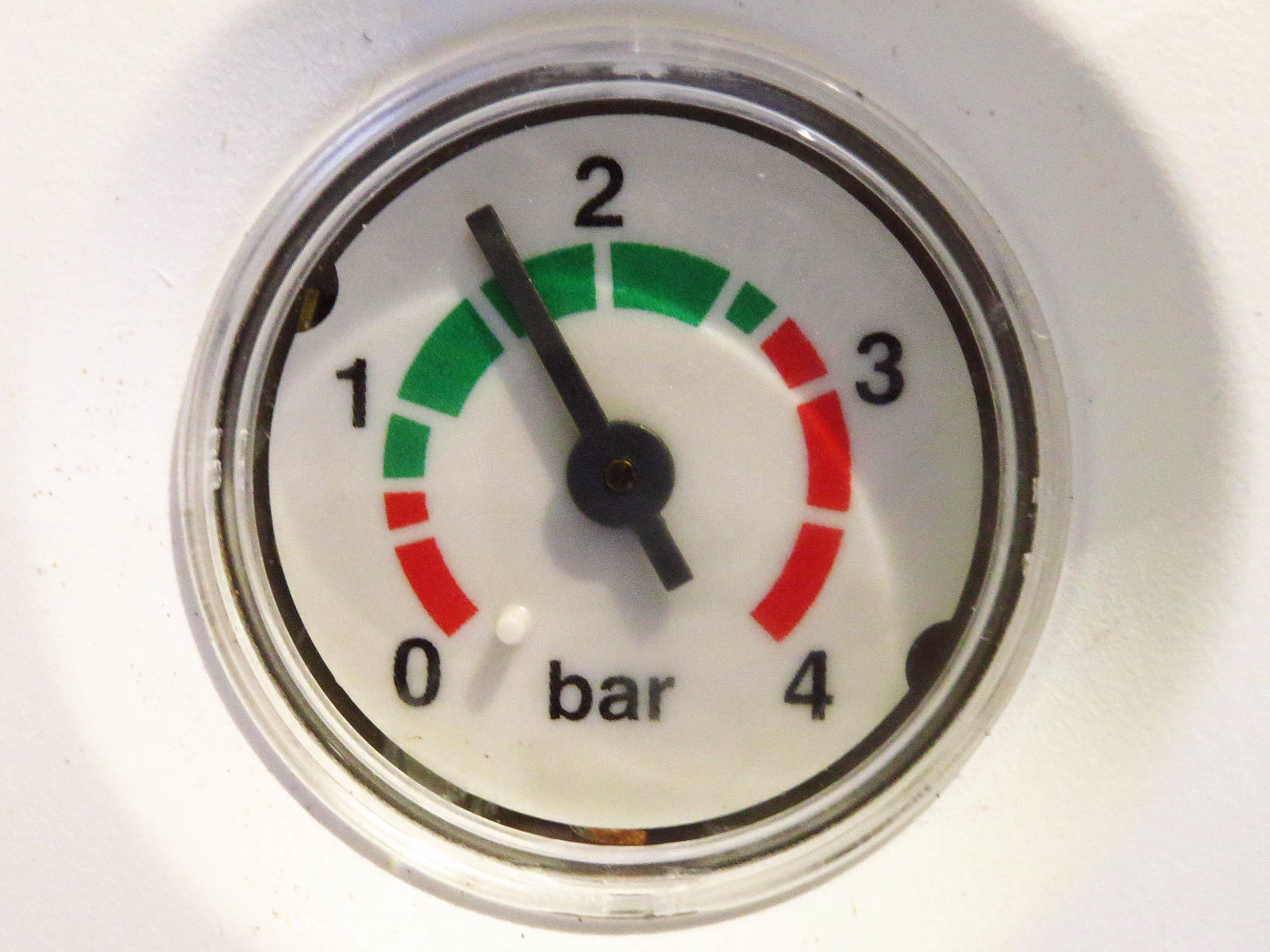Your central heating boiler must have an operating pressure between 1 and 2 bar (you should check your boiler manual for the exact recommended measurement). Being at this pressure keeps the boiler and central heating system free from air. If the pressure drops below the normal boiler pressure, a safety switch is activated that cuts off the boiler – this is done to prevent damage to your central heating system and boiler. It also prevents both from running dry.
If your boiler has low pressure, fret not, as it is very easy to rectify the issue within just a few minutes.
- Look for the filling loop under the boiler. It will connect between two pipes. There are a few variations of filling loops but we’ve added a photo below of a common one for reference.
- On each end of the filling loop there will be a valve which should be closed. This can be checked as the valve handle should be positioned horizontally across the filling loop when the valve is closed.
- If either valve isn’t completely horizontal operate it so they both are.
- Open one valve fully and then open the second valve slowly. Keeping your hand on the valve, you will hear the water entering the boiler. Watching the pressure gauge, you will see the black needle rising. Ideally the pressure should be 1.5 bar, or the needle should be at the 10 o’clock position.
When the needle reaches the desired position, close both the valves and reset the boiler. You should now have central heating and hot water .It’s normal to top up your boiler every few months, but if you find you have to top up the boiler every day or every week, we recommend calling an engineer.
- The boiler pressure gauge will normally be located on the front panel or underneath the boiler. The pressure gauge may also be digital on certain boilers, this can be found by pressing the information button continually until the screen displays a bar reading.

